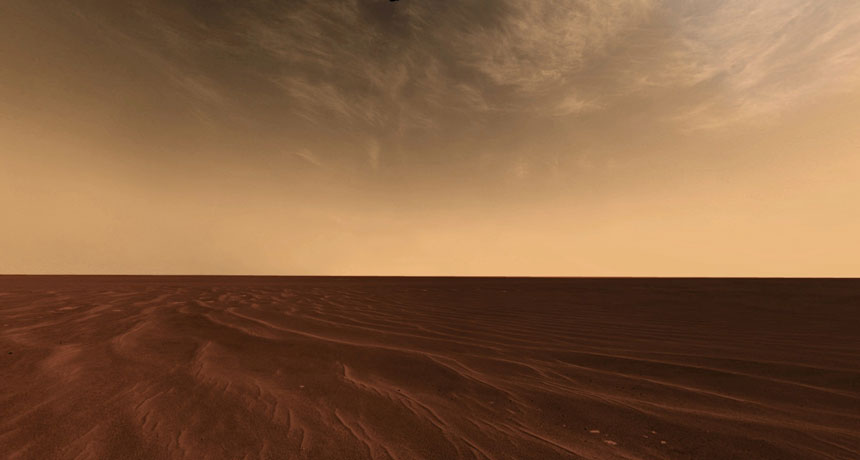Cosmic dust may create Mars’ wispy clouds

The seeds for Martian clouds may come from the dusty tails of comets.
Charged particles, or ions, of magnesium from the cosmic dust can trigger the formation of tiny ice crystals that help form clouds, a new analysis of Mars’ atmosphere suggests.
For more than a decade, rovers and orbiters have captured images of Martian skies with wispy clouds made of carbon dioxide ice. But “it hasn’t been easy to explain where they come from,” says chemist John Plane of the University of Leeds in England. The cloud-bearing layer of the atmosphere is between –120° and –140° Celsius — too warm for carbon dioxide clouds to form on their own, which can happen at about –220° C.
Then in 2017, NASA’s MAVEN orbiter detected a layer of magnesium ions hovering about 90 kilometers above the Martian surface (SN: 4/29/17, p. 20). Scientists think the magnesium, and possibly other metals not yet detected, comes from cosmic dust left by passing comets. The dust vaporizes as it hits the atmosphere, leaving a sprinkling of metals suspended in the air. Earth has a similar layer of atmospheric metals, but none had been observed elsewhere in the solar system before.
According to the new calculations, the bits of magnesium clump with carbon dioxide gas — which makes up about 95 percent of Mars’ atmosphere — to produce magnesium carbonate molecules. These larger, charged molecules could attract the atmosphere’s sparse water, creating what Plane calls “dirty” ice crystals.
At the temperatures seen in Mars’ cloud layer, pure carbon dioxide ice crystals are too small to gather clouds around them. But clouds could form around dirty ice at temperatures as high as –123° C, Plane and colleagues report online March 6 in the Journal of Geophysical Research: Planets.